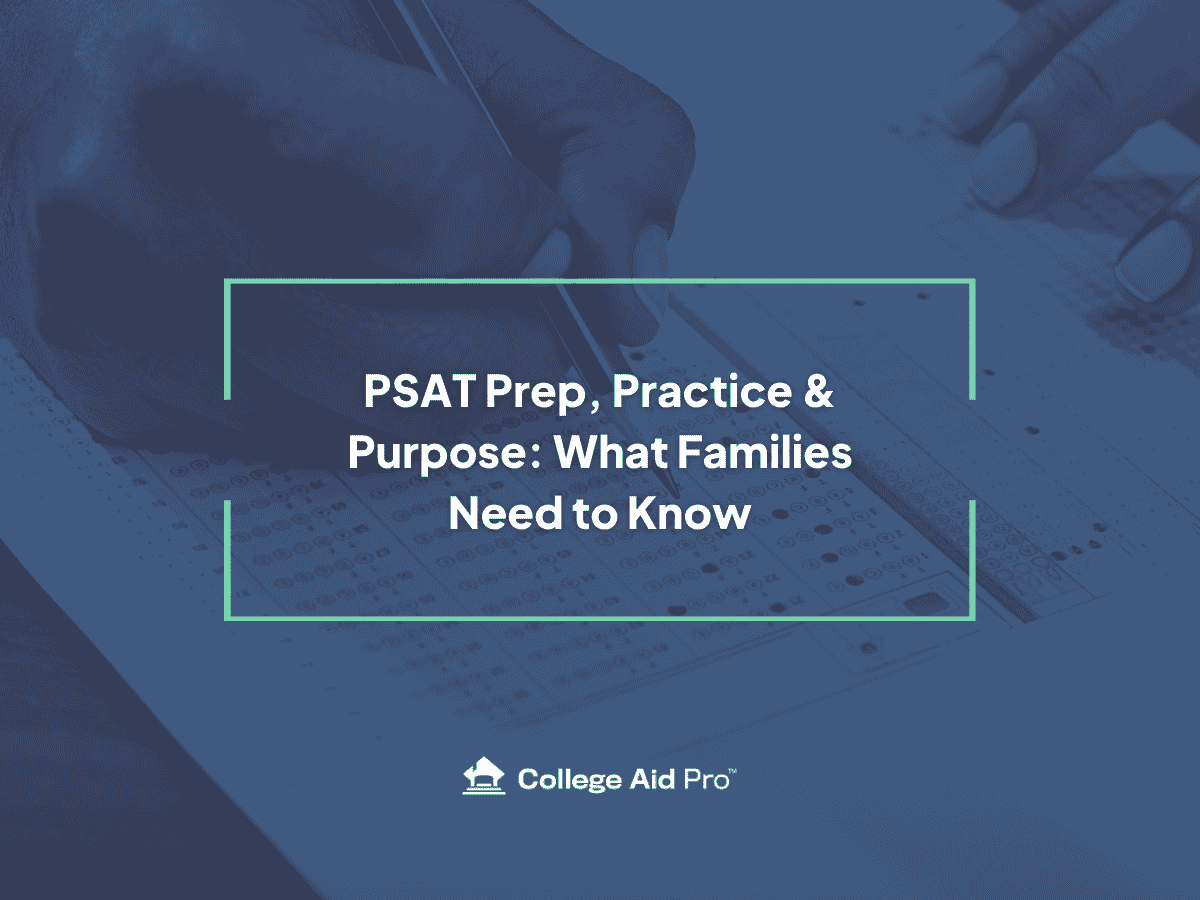PSAT Prep, Practice & Purpose: What Families Need to Know
Every fall, millions of high school students sit down for the PSAT, but few truly understand what it is—or why it matters. In a recent episode of College! The Podcast, host Peg Keough sat down with Rose Ellen Mocombe, one of College Aid Pro’s newest experts, to unpack the PSAT, its connection to the SAT and National Merit Scholarships, and how parents can use it as a powerful planning tool for the college journey.
Whether you have a sophomore just dipping their toes into standardized testing or a junior aiming for merit recognition, this guide covers everything you need to know.
What Is the PSAT and Why Do Students Take It?
As Rose Ellen explains, the PSAT (Preliminary SAT) is exactly what it sounds like: a practice version of the SAT. It’s designed to give students a preview of the real thing—both in format and difficulty—and provides a low-stakes opportunity to assess strengths and weaknesses before college admissions testing begins.
But it’s more than just a warm-up. When juniors take the PSAT, their scores are automatically entered into the National Merit Scholarship Program, which recognizes top scorers with scholarships and academic honors. These distinctions are highly regarded by colleges and can lead to thousands of dollars in merit aid.
Peg, reflecting on her own parenting experience, notes that the PSAT also gives parents a valuable benchmark:
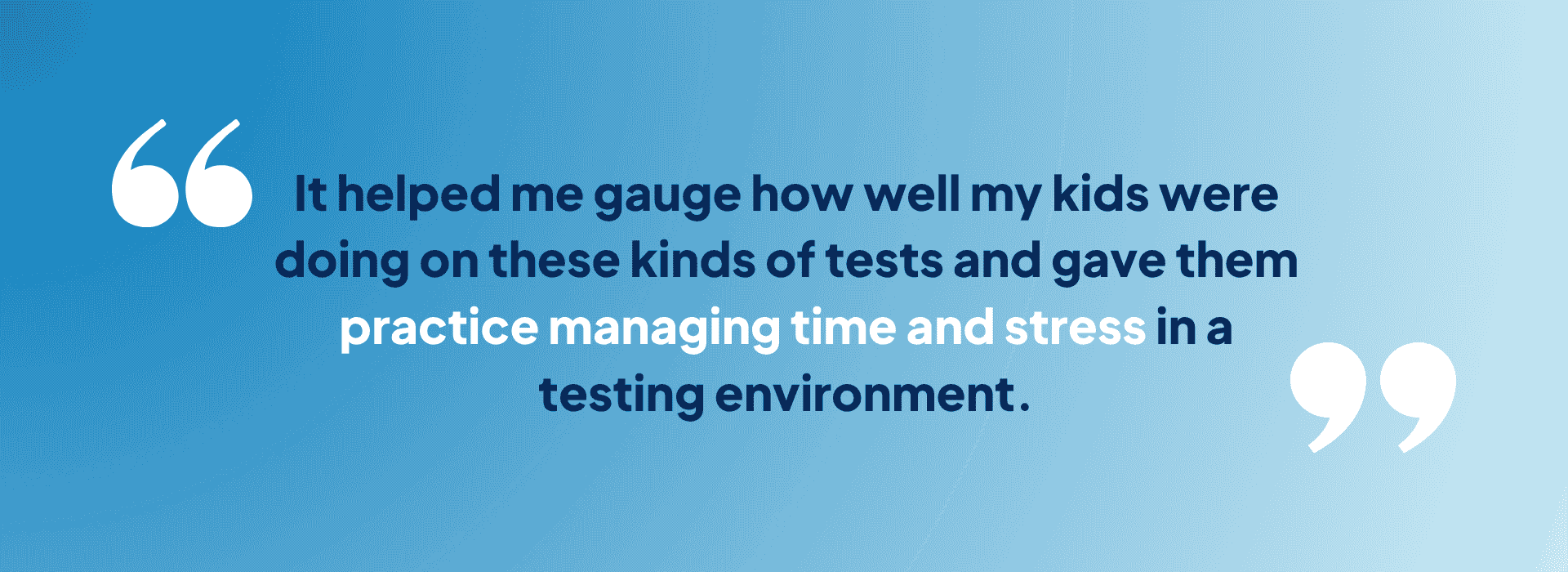
How and When to Take the PSAT
Most students take the PSAT in October of their sophomore and junior years. Many public schools offer it automatically during the school day, though private schools may vary—so it’s worth checking with your child’s counselor to confirm participation.
Sophomore year testing is often considered a “dry run,” helping students get familiar with the format and timing. Junior year, however, is when the stakes rise—since that’s when the National Merit Scholarship qualification comes into play.
Understanding National Merit Scholarships
The National Merit Scholarship Program is run by a nonprofit organization that uses PSAT scores to recognize top academic performers. Students with the highest scores in each state are designated as Commended Students or Semifinalists—and the top of that group advances to become Finalists.
Rose Ellen explains:
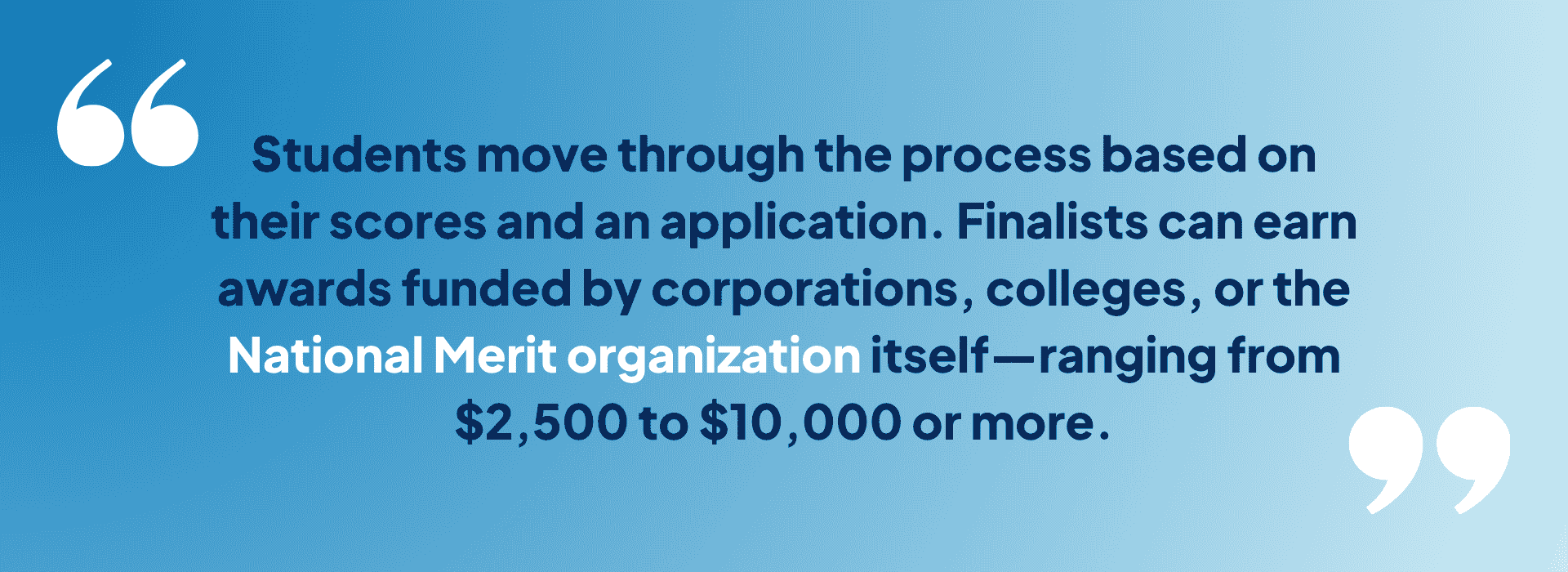
Even if your student doesn’t become a Finalist, recognition as a Commended Student or Semifinalist can enhance their college applications and open doors to merit aid from schools that value academic distinction.
PSAT vs SAT: What’s the Difference?
While the PSAT and SAT are similar, the SAT is longer and includes slightly more advanced math and reading content. The PSAT helps identify areas where a student might need extra practice before taking the SAT.
Rose Ellen emphasizes that students can start light SAT practice as early as 8th or 9th grade:
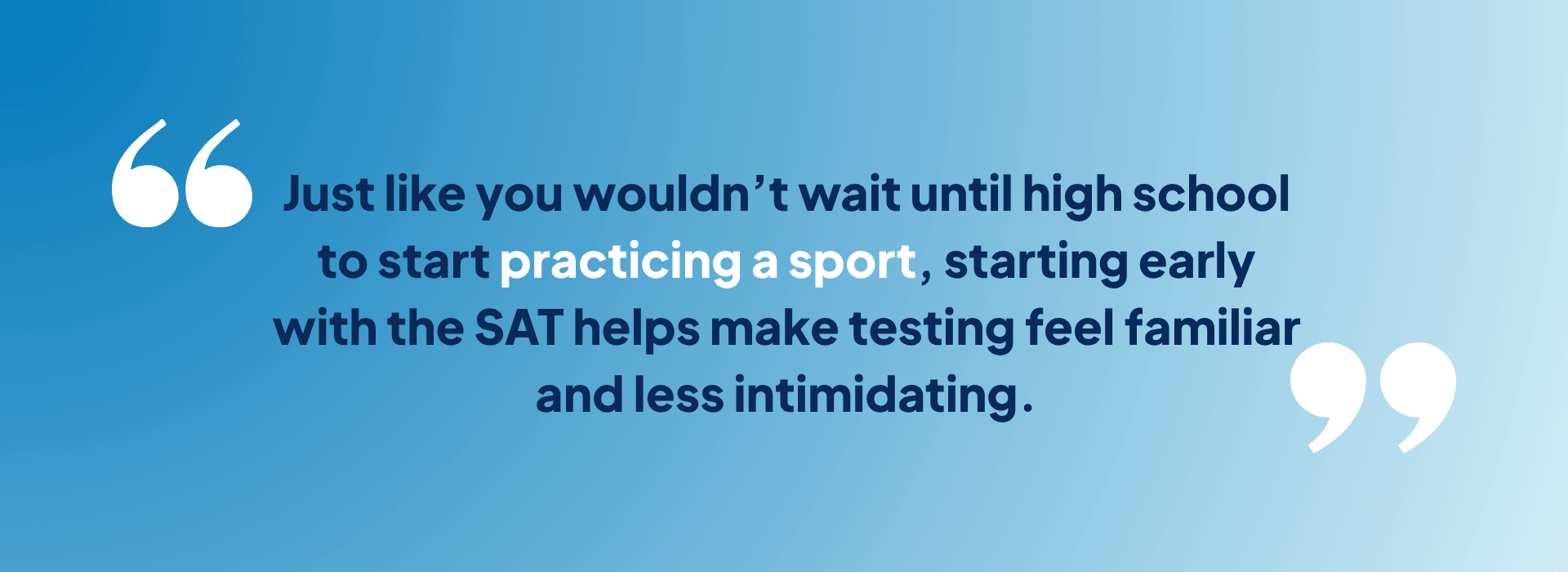
For families wondering whether to focus on the SAT or ACT, Peg points out that each student has unique strengths—and it’s often worth trying both formats early on to see which feels like a better fit.
How the PSAT Fits into Test-Optional Admissions
The rise of test-optional college admissions has added another layer of complexity for families. Many schools adopted this policy during the pandemic, but in 2025 and beyond, more institutions are returning to test-required or test-preferred policies.
Even when a school is test-optional, submitting strong scores can still give an applicant an edge—especially for scholarships. Peg notes:
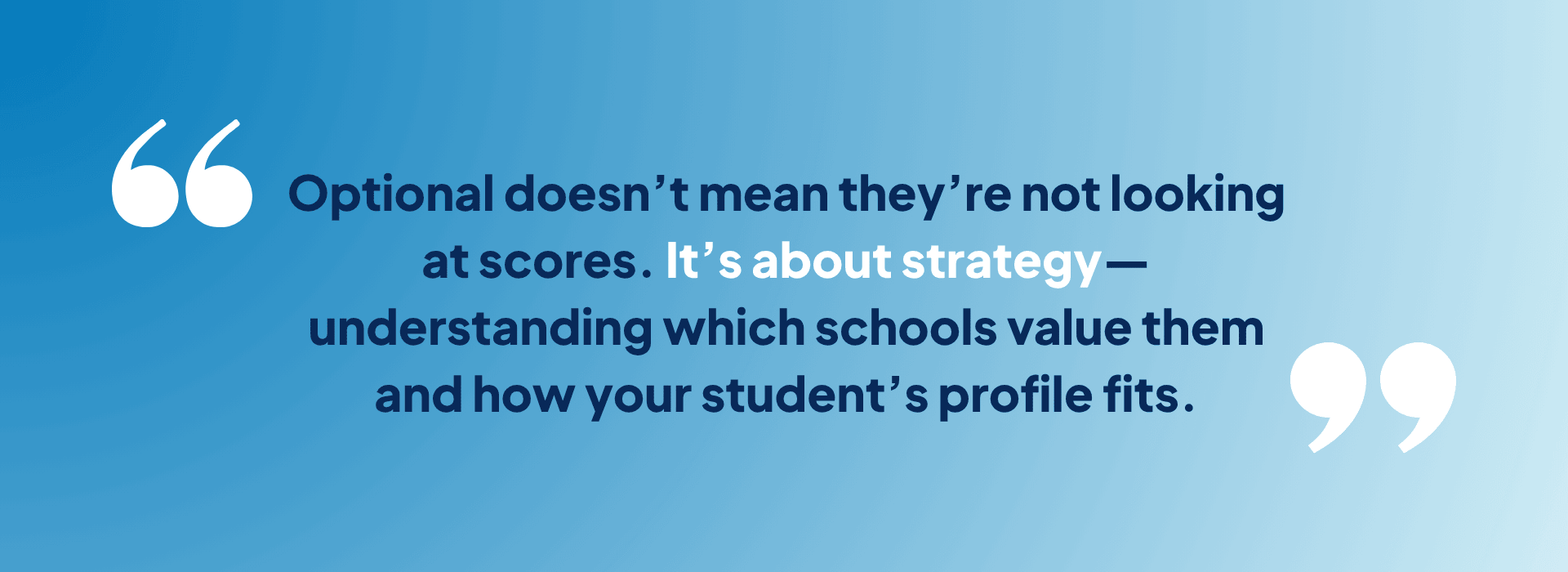
This makes the PSAT a strategic tool. The scores can guide you on whether to invest time in test prep or focus on other parts of the college application, like essays or extracurriculars.
Reducing Test Anxiety and Building Confidence
One of the biggest takeaways from Peg and Rose Ellen’s conversation is that the PSAT should be seen as an opportunity, not a stressor. For students who tend to get anxious about testing, parents might even choose not to mention the National Merit connection beforehand to reduce pressure.
Peg shares:
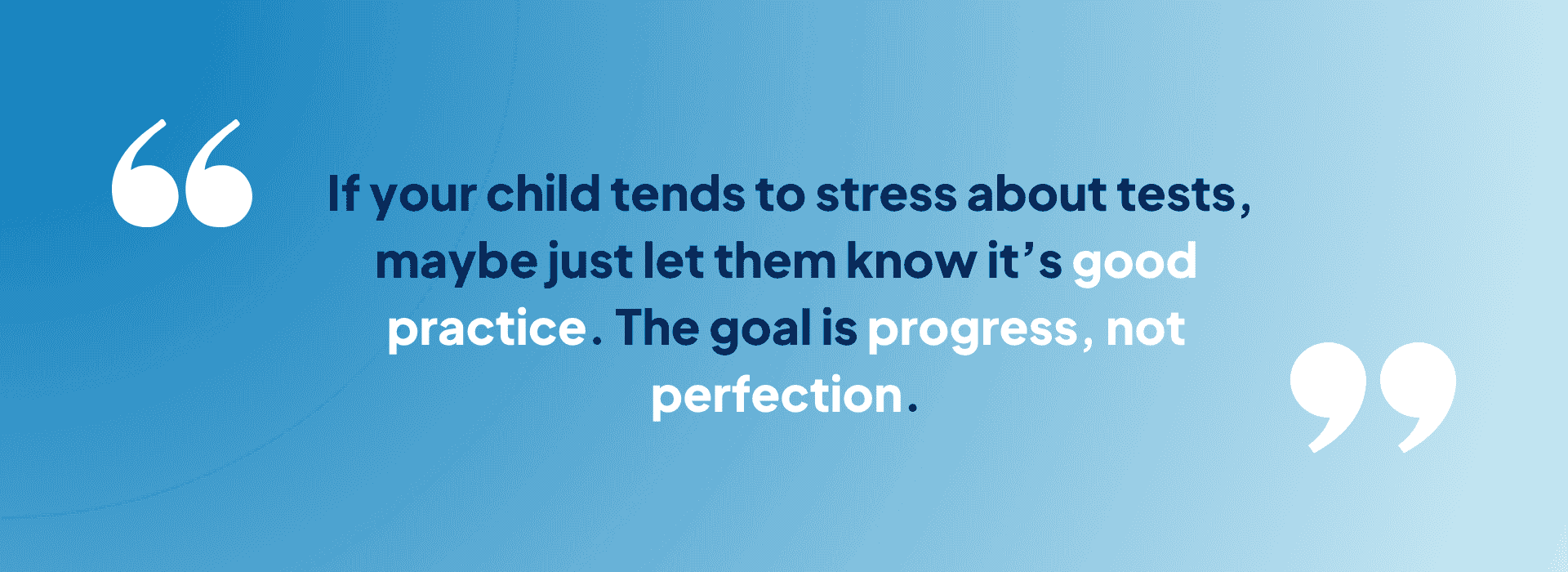
Practicing in low-stakes environments—like timed sections at home or using free tools such as Khan Academy—can help normalize the experience and build confidence over time.
Why the PSAT Is About More Than Testing
Rose Ellen connects the PSAT to a broader message about college readiness and financial planning. Just as you don’t wait until senior year to start saving for college, you shouldn’t wait to start understanding the testing landscape.
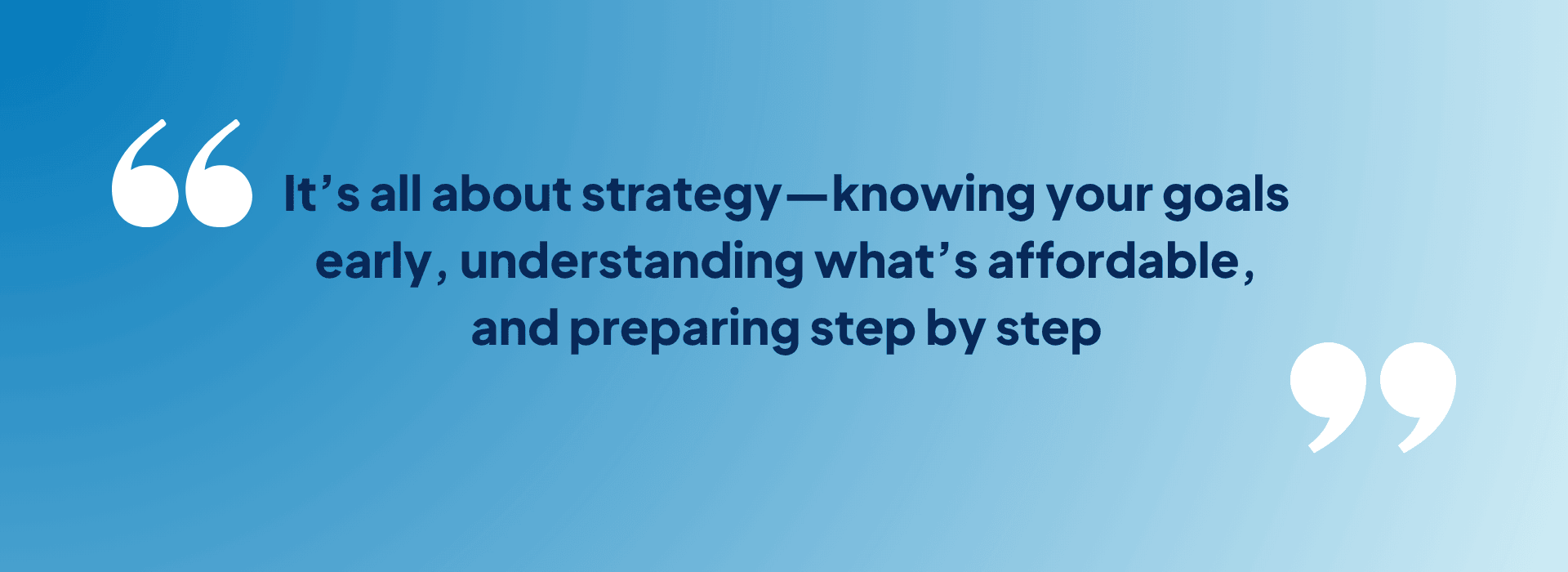
The PSAT isn’t just about scores. It’s about helping students and families understand their academic and financial fit before senior year stress kicks in.
Final Thoughts: Celebrate Every Personal Best
Not every student will become a National Merit Scholar—and that’s perfectly fine. As Peg beautifully puts it:
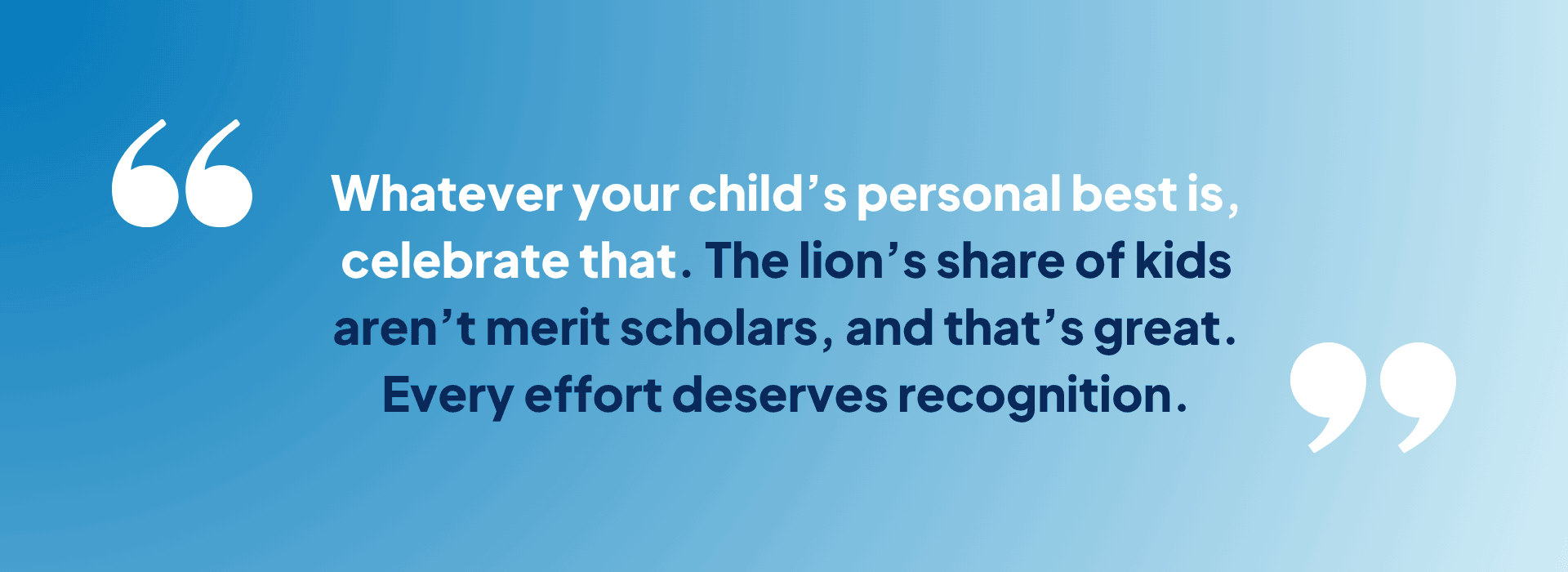
The PSAT can be a meaningful milestone on your student’s college journey—one that builds confidence, sparks motivation, and opens the door to new opportunities.
🎓 Want More Expert Guidance?
Check out College! The Podcast for real conversations about college admissions, financial aid, and family strategy.
Visit College Aid Pro for tools, webinars, and expert advice to help you navigate every step of the journey—from Admissions prep to FAFSA forms and everything in between.
